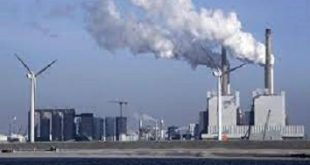The U.S. economy is a complex terrain with resiliency in many areas and substantial challenges in others as 2024 progresses. Policymakers, firms, and consumers are navigating an unpredictable economic climate affected by global influences, technological breakthroughs, and domestic policy moves, with a mix of economic indicators expressing both caution and optimism.
GDP and Economic Growth
The GDP grew at an annual pace of about 2.2% in the first half of 2024, indicating modest development in the U.S. economy. Despite being slower than pre-pandemic levels, this growth is indicative of a consistent, if unspectacular, recovery. The service industry remains a major engine of economic activity, especially in sectors like healthcare, technology, and financial services. In the meanwhile, manufacturing has had varying results. While some sectors, like the automobile industry, have recovered significantly, others, particularly those that depend on international supply networks, continue to experience problems.
Consumer Prices and Inflation
Both consumers and government continue to have serious concerns about inflation. Inflationary pressures have decreased slightly since peaking in 2022, although the rate is still higher than the Federal Reserve’s 2% target. In the middle of 2024, supply chain bottlenecks, rising energy costs, and wage increases are the main drivers of inflation, which is estimated to be around 3.5%. In order to balance the need to reduce inflation without impeding economic growth, the Federal Reserve has adopted a cautious approach. The central bank has progressively raised interest rates while indicating that before making any more changes, it will closely evaluate the state of the economy.
Dynamics of the Labour Market
In 2024, the American labour market offers a kind of paradox. The unemployment rate has stayed low, averaging 3.8%, suggesting that the economy is still creating jobs. But significant parts of the population are still not in the labour force, and the rate has not entirely returned to pre-pandemic levels. The alleged “great resignation” of 2021–2022 has turned into a “great reshuffle,” as employees demand greater pay, flexible work schedules, and better possibilities.
Pay growth has been strong as businesses fight for talent, especially in lower-income sectors. But this wage growth has also increased inflationary pressures, which presents a challenging situation for both firms and regulators. Furthermore, the labour market has changed due to the increase of remote employment, which has important ramifications for commercial real estate, urban economies, and the overall status of the economy.

Consumer Confidence and Spending:
Despite concerns about inflation, geopolitical tensions, and economic uncertainty, consumer optimism has remained resilient. Spending on services, particularly travel, entertainment, and dining, has seen strong growth as consumers continue to prioritise experiences over goods. However, spending on durable goods, such as vehicles and appliances, has slowed, reflecting both high prices and a shift in consumer preferences. Overall, consumer confidence in the U.S. has been volatile in 2024, reflecting the mixed signals from the broader economy.
Trends in the Housing Market
2024 will see a slowdown in the increase of prices and sales in the U.S. housing market in contrast to the frenzied activity of the preceding two years. The Federal Reserve’s tightening monetary policy has resulted in higher mortgage rates, which have decreased demand, especially among first-time homebuyers. Although there hasn’t been much of a drop in housing values, the rate of appreciation has significantly slowed.
The number of available properties has somewhat grown in many markets, which is encouraging to purchasers. But affordability is still a big problem, especially in cities where housing costs are rising faster than incomes. Significant shifts have also occurred in the rental sector, where rent growth has moderated but is still high relative to historical standards.
Trade and Global Factors
The state of the world economy continues to have a big impact on the American economy. Supply chain interruptions have continued, despite indications of a slow recovery, especially in important industries like semiconductors and pharmaceuticals. Trade tensions are nevertheless a concern because of ongoing conflicts over intellectual property, technology, and tariffs, particularly with China.
Global energy markets have an impact on the United States as well; changes in demand and geopolitical developments can cause fluctuations in the price of petrol and oil. The shift to renewable energy sources is still a top priority, but due to technological and legislative obstacles, change has not happened as quickly as some had planned.
Gazing Forward
The trajectory of the American economy in 2024 is still unknown. The labour market’s intricacies, inflation, and pressures from throughout the world, along with the vital industries’ resilience, indicate that the economy will encounter obstacles going forward. In order to maintain growth, manage inflation, and address long-term structural problems like income inequality, climate change, and technology disruption, policymakers will need to strike a balance.
Resilience and adaptation will be essential for managing the changing economic landscape for both consumers and enterprises. The U.S. economy has historically shown the ability to rebound and adapt, so even if the challenges are great, there is cautious confidence that it will do so once more in the next months and years.





